
The Toy Story series marks a landmark of sorts, helping establish Pixar animation studios as a major production company and providing early examples of meticulously crafted stories with appeal for both children and adults. The first trilogy of movies were truly stellar accomplishments, providing loads of laughs and even eliciting a strong emotional response (with that third film in particular really going in a dark direction). I’m going to get myself in a lot of trouble here by saying that Toy Story 4 is perfectly pleasant and, as expected, impeccably animated. It’s definitely a good film. Still, the movie also feels a little too familiar and the new plot doesn’t carry the same weight as previous installments.
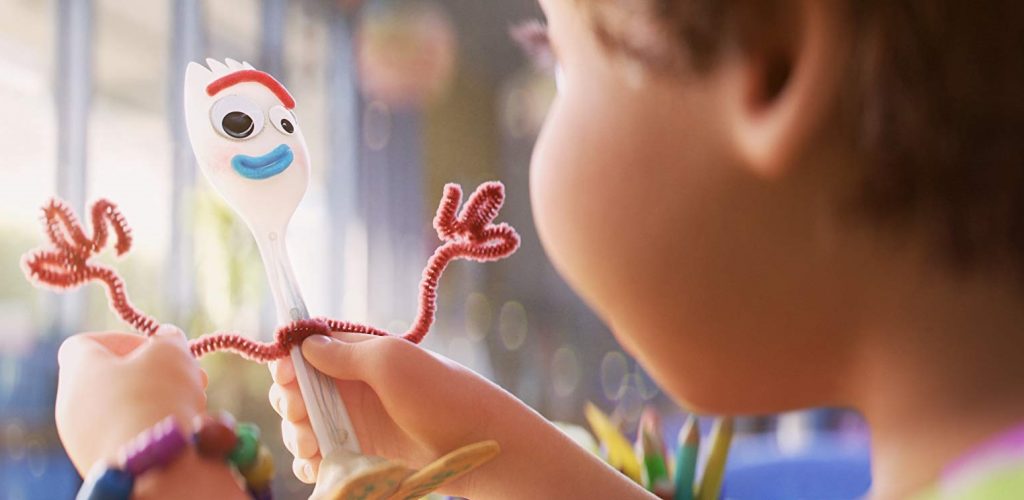
As the film begins, Woody (Tom Hanks), Buzz Lightyear (Tim Allen) and the rest of the gang have moved on and are living with a new owner, a young girl named Bonnie (Madeleine McGraw). Of course, there’s a different dynamic with this child as well as issues affecting both her and the group. When a nervous Bonnie heads off to her first day at kindergarten, Woody decides to tag along and make sure she adjusts to the new chapter in her life. To deal with the stress, the child uses a plastic spork to create a new friend named Forky (Tony Hale), who becomes an instant favorite. Woody takes it upon himself to try and teach the ropes to the cutlery-turned-toy. When the family take an RV and head out on a vacation to the Grand Basin, Forky is lost, and gang team up to try and locate him. Along the way, they encounter old friend Bo Peep (Annie Potts) and antique shop doll, Gabby Gabby (Christina Hendricks).
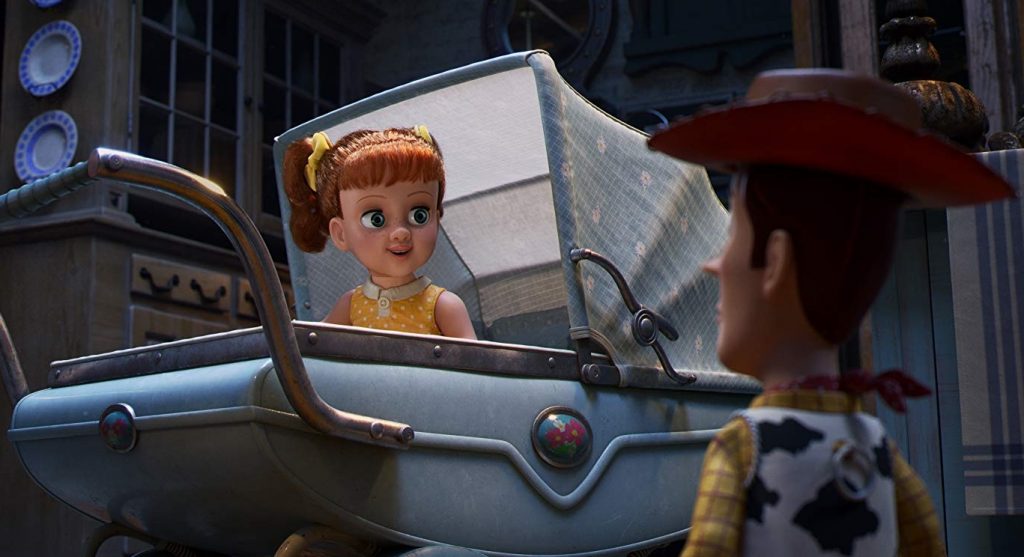
Gabby Gabby serves as the foil in this story, a lonely doll with a broken voice module. She takes Forky hostage to convince Woody to give up his own voice box, so that she can finally be discovered and adopted by a child. While this is supposed to be a great threat, the characters speak freely to one another with or without the apparatus. As such, the stakes don’t feel very high this time by comparison. It certainly doesn’t match the themes of mortality and near incineration dealt with in the previous chapter.
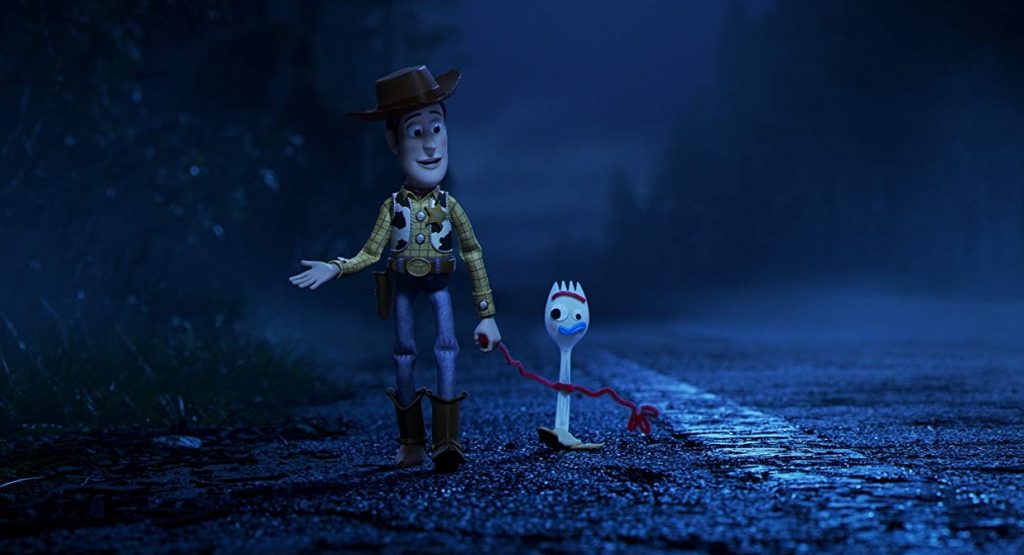
Some of the gags and interplay between the toys work, but half of them feel recycled and overly familiar. Once again, the humans seem oblivious to their plastic companions, even when the toys are moving all around them. At least there are a couple of new elements introduced that do work well. Crafted from garbage at school, Forky is an entertaining addition to the cast and his deep obsession with trash certainly raises a smile. The movie also earns some laughs as Woody is forced to use refuse-related metaphors to deliver concepts to Forky about his place in the world.
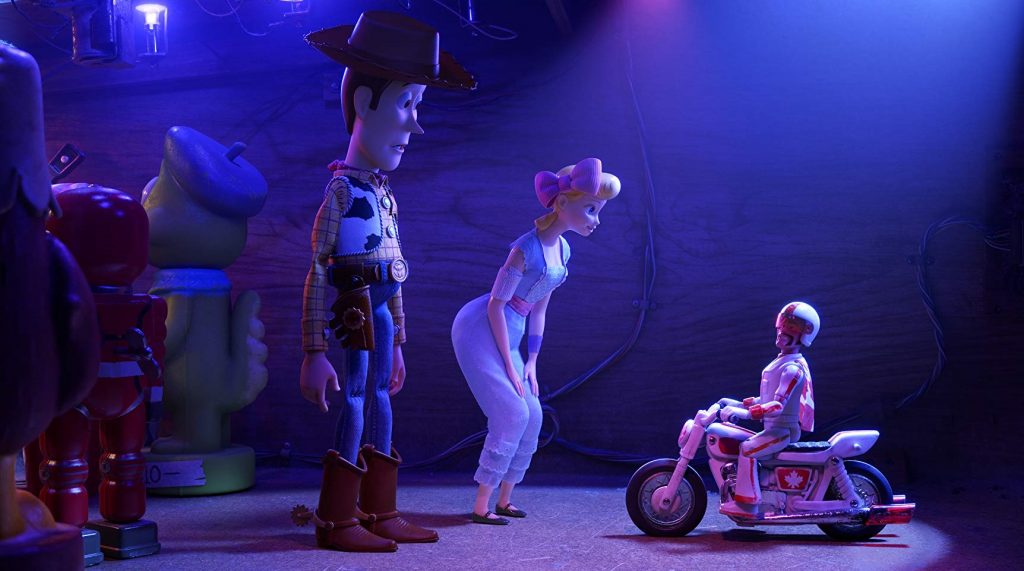
Another plus is the late appearance of Duke Kaboom (Keanu Reeves), a Canadian Evel Knievel-esque stunt biker whose help is required to make a grand leap and help rescue Forky from Gabby Gabby and his captors. He’s a very entertaining character, but his introduction to the film comes late and as a result, Duke seems underutilized. The film and action sequences would have benefited greatly from more of the cyclist and his psychosis involving a loss of confidence.
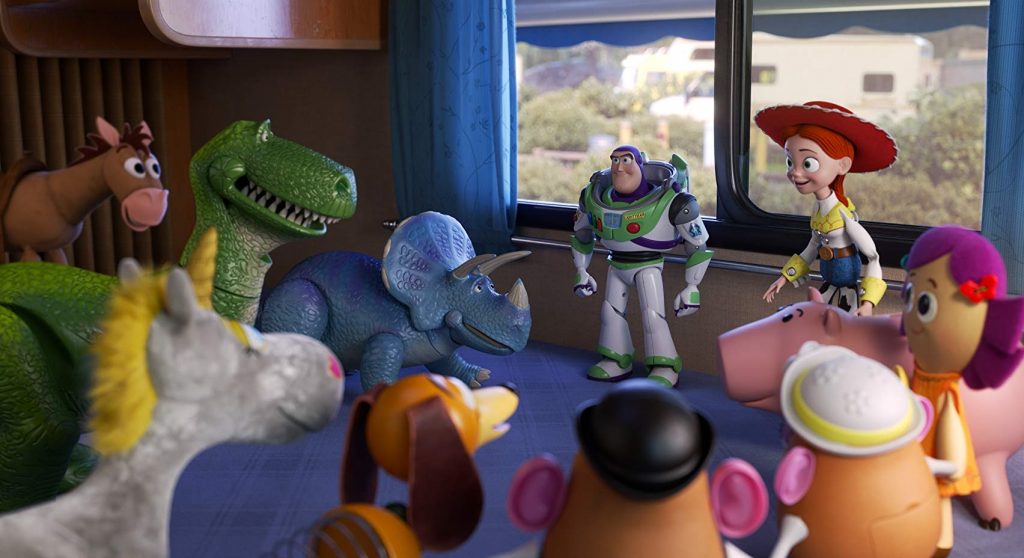
The movie also tries to deal with issues raised to Woody by Bo Peep, who has ventured out on her own without a child. She believes that Bonnie and the cowboy aren’t a good fit, and encourages him to leave the family behind for a life free from ownership. On the one hand, it’s an interesting idea that could have offered a few different directions for the toys. Unfortunately, the story handles everything so gently and without serious conflict that it’s a wasted opportunity. A Toy Story film about an abusive owner whom the characters must revolt against, resulting in an exaggerated revolution over the rights of plastic figures could have added more humor and zip than what is ultimately delivered.
Instead, this sequel appears to go through the motions, delivering the expected jokes and sentimentality against an impressively animated backdrop. The movie is agreeable and I admittedly liked it, but also assert that it offers little that is original or fresh. Toy Story 4 looks good and is solid family entertainment, but feels inessential when compared to its predecessors, reworking and repeating elements from previous features to mixed results.


